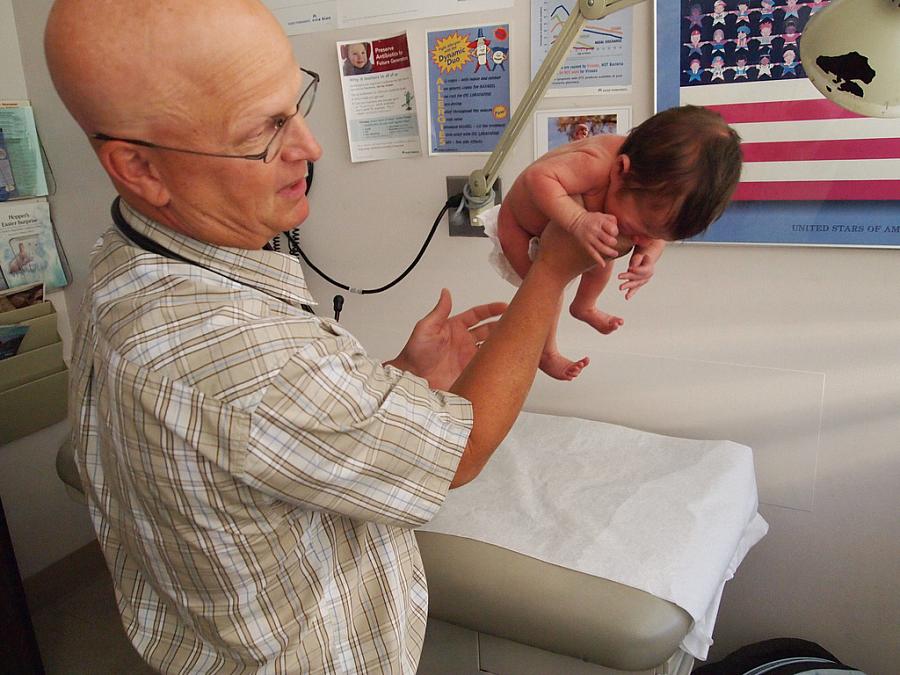As Medicaid reimbursements lag, study links higher payments to better access

Throughout the country, government-funded Medicaid has such low reimbursements that health providers report losing money seeing these patients. As a result, many physicians’ offices turn away these patients, opting instead to see those with better-paying private plans or Medicare, the national health insurance program for Americans over 65.
As part of the Affordable Care Act’s goal of improving health care access, the law included a two-year, federally-financed Medicaid reimbursement bump for primary care services.
The idea was that higher reimbursements would help the millions of newly insured patients access care, especially since Medicaid’s low payments are frequently cited as a reason more doctors don’t participate. (In this Health Affairs study, for example, almost a third of physicians said they would not accept new Medicaid patients.)
On the heels of the expiration of that temporary reimbursement hike, a new study investigated whether those Medicaid pay increases resulted in more primary care appointment availability. The answer? A resounding yes.
“We found strong evidence that providers who were already participating in a Medicaid plan in 2012 were more willing to schedule an appointment with a new Medicaid patient in 2014,” according to the paper published this month in The New England Journal of Medicine. “Our findings suggest that providing higher Medicaid payments is an effective strategy for ensuring access to enrollees among already participating primary care providers.”
Those findings comes as the Supreme Court is weighing whether health providers can challenge state’s low Medicaid fees and sue them on the grounds that the program isn’t providing adequate coverage.
In the new study, the authors measured the availability of primary care appointments in 10 states, first before the hikes went into effect and again after. Callers made a total of nearly 15,000 calls seeking new patient appointments using Medicaid and private insurance in both periods.
Between 2012 and 2014, appointment availability increased from 58.7 percent to 68.4 percent of providers in the Medicaid group. Availability stayed consistent in the private insurance control group. The states with the largest increases in Medicaid appointment availability were also the states with the largest increases in reimbursements, with one exception.
The study did not evaluate whether the reimbursement hikes encouraged providers who weren’t accepting Medicaid to change their minds. But those who were already seeing Medicaid patients were more willing to schedule an appointment with a new Medicaid patient in 2014, after the temporary hikes were in effect.
Those findings suggest that in states that don’t extend the hikes, it may be harder for patients to get appointments, particularly in states that had low Medicaid reimbursements before the ACA jump. California is near the bottom of the barrel nationwide when it comes to Medi-Cal, its version of the federal Medicaid program.
The effect of low Medi-Cal reimbursement rates on access are well documented in this report from the California HealthCare Foundation, which found that only about 60 percent of the state’s doctors treat Medi-Cal patients — that figures soars to almost 90 percent for private insurance. The report, which looked at those figures before health reform, predicted that expanding the ranks of Medi-Cal patients could make access to care even harder.
The expiration of the ACA’s primary care rate increase coincides with California’s own 10 percent Medi-Cal rate cut for primary care providers. That double whammy troubles many health advocates who say providers can’t afford to keep seeing patients they lose money on.
California Healthline recently interviewed Francisco Silva, vice president of legal affairs at the California Medical Association, who predicted primary care providers who see a lot of Medi-Cal patients will feel the financial impact and scale back. "These cuts will have a devastating impact on the ability of doctors to see those patients,” Silva said.
As the high court debates the issue on the national level (this brief from the Kaiser Family Foundation discusses key issues and this piece from Business Week analyzes the potential impact), legislative strategies are also percolating on the state level to address the low reimbursements. Health advocates say it’s time to revisit cuts that arose during the recession.
In this article, Sen. Richard Pan (D-Sacramento), discusses the possibility of targeted reversals of cuts for specific provider payment categories, which could be critical to avoid access issues. Pan, who authored a stalled bill that would have evaluated Medi-Cal’s rates and their effect on access, pointed out that it’s only a matter of time before low rates make it harder and harder for Medicaid patients to see their doctor.
Photo by mjmonty via Flickr.

